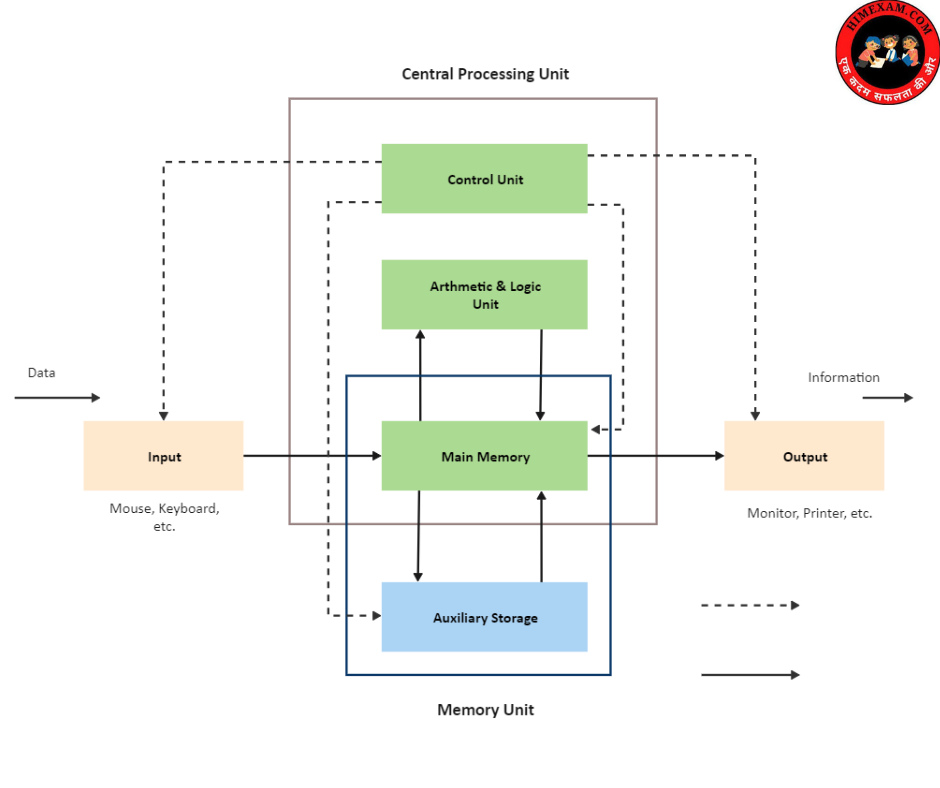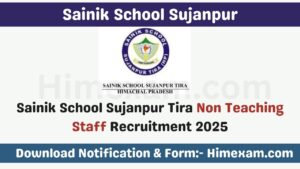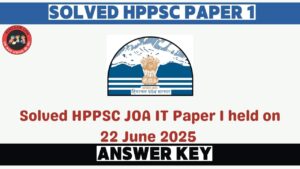Computer Architecture:-Input,CPU,Output:-Computer architecture deals with the functional behaviour of a computer system as viewed by a programmer. It can also be described as the logical structure of the system unit that housed electronic components. The first computer architecture was introduced in 1970, by John Von Neumann

Components of Computer
1. Input Unit
2. Output Unit
3. Central Processing Unit
4. Memory Unit
Note:-System unit is a metal or plastic case that holds all the physical parts of the computer. The components that process data are located in it.
Input Unit :-The computer accepts coded information through input unit by the user. This unit is used to give required information to the computer. For example, keyboard, mouse, etc.
An input unit performs the following functions
- It accepts the instructions and data from the user.
- It converts these instructions and data to computer acceptable format.
- It supplies the converted instructions and data to the computer system for further processing.
Output Unit This unit sends the processed results to the user. It is mainly used to display the desired result to the user as per input instructions. For example, monitor, printer, plotter, etc.
The following functions are performed by an output unit
- It accepts the results produced by the computer which are in coded form and hence cannot be easily understood by user.
- It converts these coded results to readable form which convenient to users.
- It produces the converted results to the user.
Central Processing Unit (CPU) Central Processing Unit is often called the brain of computer. The CPU is fabricated as a single Integrated Circuit (IC) and is also known as microprocessor. It consists a set of registers, arithmetic logic unit and control unit, which together interpret and execute instructions in assembly language.
The primary functions of the CPU are as follows
- The CPU transfers instructions and input data from main memory to registers.
- The CPU executes the instructions in the stored sequence. When necessary, CPU transfers output data from registers to main memory.
- A CPU controls all the internal and external devices and performs arithmetic and logic operations.
The CPU consists of following main sub-systems:-
- Arithmetic Logic Unit (ALU) ALU contains the electronic circuitry that executes all arithmetic and logical operations on the available data. ALU uses registers to hold the data that is being processed. Most ALUs can perform the following operations (i) Logical operations (AND, NOT, OR, XOR).
(ii) Arithmetic operations (addition, subtraction, multiplication and division).
(iii) Bit-shifting operations (shifting or rotating a word by a specified number of bit to the left or right with or without sign extension).
(iv) Comparison operations (=, <, < =, >, > =) - Registers These are used to quickly accept, store and transfer data and instructions that are being used immediately by the CPU. These registers are the top of the memory hierarchy and are the fastest way for the system to manipulate data. The number and size of registers vary from processor-to-processor.
- Control Unit (CU) CU coordinates with the input and output devices of a computer. It directs the computer to carry out stored program instructions by communicating with the ALU and the registers. It organises the processing of data and instructions. The basic function of control unit is to fetch the instruction stored in the main memory, identify the operations and the devices involved in it and accordingly generate control signals.
- Memory Unit This unit is responsible to store programs or data on a temporary or permanent basis. It has primary memory (main memory) and secondary memory (auxiliary memory). The input data which is to be processed is brought into main memory before processing. Another kind of memory is referred to as secondary memory of a computer system. This unit is used to permanently store data, programs and output. This unit does not deal directly with the CPU.
- Microprocessor It is the controlling element in a computer system and is sometimes referred to as the chip. Microprocessor is the main hardware that drives the computer. It is a large Printed Circuit Board (PCB), which is used in all electronic systems such as computer, calculator, digital system, etc. The speed of CPU depends upon the type of microprocessor used. Intel 4004 was the first microprocessor made by Intel in 1971 by scientist Ted Hoff and engineer Frederico Faggin. Some of the popular microprocessors are Intel, Intel Core i7, Intel Core i9, Dual Core, Pentium IV, etc.
- Motherboard The main circuit board contained in any computer is called a motherboard. It is also known as the main board or logic board or system board or planar board. All the other electronic devices and circuits of computer system are attached to this board like, ROM, RAM, expansion slots, PCI slots and USB ports. It also includes controllers for devices like the hard drive, DVD drive, keyboard and mouse.
Components on Motherboard
(i) CMOS battery
(ii) BIOS chip
(iii) Fan
(iv) Expansion slot
(v) SMPS
(vi) PCI slot
(vii) Processor chip
(viii) Buses
Interconnection of Units
CPU sends data, instructions and information to the components inside the computer as well as to the peripheral devices attached to it. A bus is a set of wires used for interconnection, where each wire can carry one bit of data. In other words, bus is a set of electronic signal pathways that allows information and signals to travel between components inside or outside of a computer.
A computer bus can be divided into two types
1. Internal Bus The internal bus connects components inside the motherboard like CPU and system memory. It is also called the system bus. Internal bus includes following buses
(i) The command to access the memory or the I/O devices is carried by the control bus.
(ii) The address of I/O devices or memory is carried by the address bus.
(iii) The data to be transferred is carried by the data bus.
2. External Bus It connects the different external devices; peripherals, expansion slots, I/O ports and drive connections to the rest of computer. It is also referred to as the expansion bus.
Instruction Cycle It represents the sequence of events that takes place as an instruction is read from memory and executed.A simple instruction cycle consists of the following steps
1. Fetching the instruction from the memory.
2. Decoding the instruction for operation.
3. Executing the instruction. 4. Storing in memory. In above steps, steps 1 and 2 instructions are same and known as fetch cycle and steps 3 and 4 instructions are different and known as execute cycle
- UPS (Uninterruptible Power Supply) is an electrical apparatus that provides emergency power to a load when the input power source or mains power fails.
- Power strip is an electrical device that is used to expand the capacity of a wall outlet in terms of the number of devices it can accommodate.
- Instruction code is a group of bits that instruct the computer to perform a specific operation.
More Pages:-
हेलो दोस्तों ,आपका हमारी वेबसाइट Himexam.com पर स्वागत है। जैसा की आपको पता है हमारी वेबसाइट Himexam.com आपको समय-समय पर सभी HP Govt Jobs & All India Govt Jobs की Notifications प्रदान करवाती है। साथ ही साथ Himachal Pradesh Exam Previous Paper और Himachal Pradesh GK ,Himachal Pradesh & National +International Current Affairs के सभी नोट्स मुफ्त उपलब्ध करवाते है। हमारी वेबसाइट के अलग अलग प्लेटफार्म पर pages & Group बने है जैसे की facebook ,Telegram और Instagram .. अगर आप हिमाचल के किसी भी पेपर की तैयारी कर रहे हो तो जल्दी से इन groups के साथ जुड़ जाएं इनके लिंक नीचे table में दिए गए है।
Join Us:-
| Like Our Facebook Page | Click here |
| Join Us oN Telegram | Click here |
| Join Us On Instagram | Click Here |








